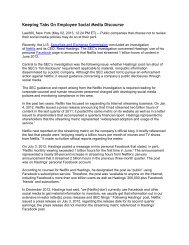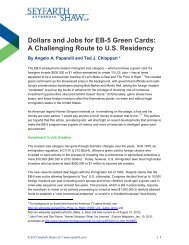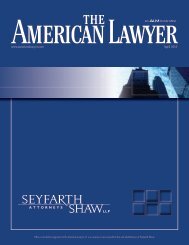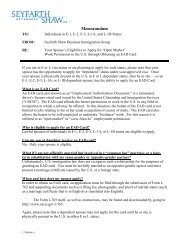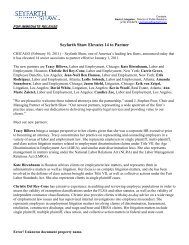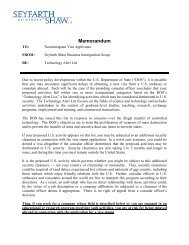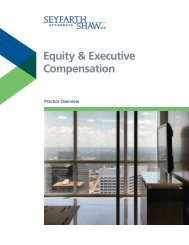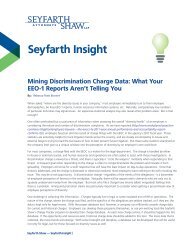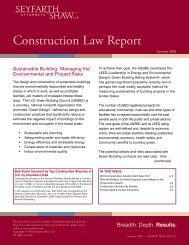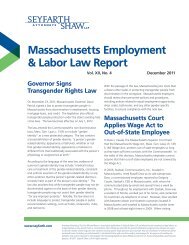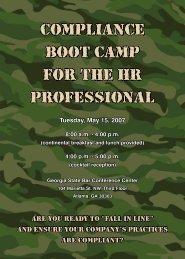Litigating California Wage & Hour and Labor Code Class Actions
Litigating California Wage & Hour and Labor Code Class Actions
Litigating California Wage & Hour and Labor Code Class Actions
You also want an ePaper? Increase the reach of your titles
YUMPU automatically turns print PDFs into web optimized ePapers that Google loves.
sample. 393 The court determined that the Bank had misclassified 19 of the 20 class<br />
members in the sample, <strong>and</strong> then extrapolated from that result to a conclusion that all 260<br />
class members had been misclassified. 394<br />
The court then conducted a damages phase in which it adopted the view of plaintiffs’ expert<br />
that, with a 95% confidence level, the average class member worked 11.87 hours of<br />
overtime per week, with a margin of error of 43%—in other words, the actual average<br />
overtime could fall anywhere in the range of 6.7 hours to almost 17 hours per week. 395 The<br />
trial court entered judgment against the Bank in the amount of approximately $15 million. 396<br />
The Ruling<br />
The Court of Appeal reversed the judgment because it found that the trial plan did not<br />
reflect a statistically significant sample of the class or a reliable methodology. 397 Although<br />
the Court of Appeal stopped just short of issuing a bright line rule, it came close to holding<br />
that statistical extrapolation cannot determine collective liability in a wage <strong>and</strong> hour class<br />
action. 398 The decision also recites trial court errors that deprived the Bank of fundamental<br />
due process. 399<br />
The Court of Appeal further faulted the trial plan for denying the Bank a chance to put on<br />
any evidence outside of the trial sample, including the testimony of class members to show<br />
that they were properly classified. 400 This evidence, if admitted <strong>and</strong> credited, would have<br />
established that at least one-third of the class was properly classified. 401 The Court of<br />
Appeal was troubled that the judgment awarded an average of over $50,000 to each of the<br />
239 absent class members, while the Bank was precluded from putting on evidence that<br />
might have precluded at least one-third of them from any recovery: “fundamentally, the<br />
issue here is not just that USB was prevented from defending each individual claim but also<br />
that USB was unfairly restricted in presenting its defense to class-wide liability.” 402<br />
393 Id. at 263-264.<br />
394 Id. at 238-239.<br />
395 Id. at 247.<br />
396 Id.<br />
397 Duran, 203 Cal. App. 4th at 247-248.<br />
398 Id. at 257-258.<br />
399 Id. at 259-276.<br />
400 Id. at 259.<br />
401 Id. at 260.<br />
402 Id. at 262.<br />
Seyfarth Shaw LLP | www.seyfarth.com <strong>Litigating</strong> <strong>California</strong> <strong>Wage</strong> & <strong>Hour</strong> <strong>Class</strong> <strong>Actions</strong> (12th Edition) 88



